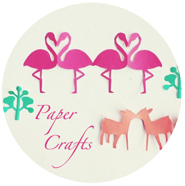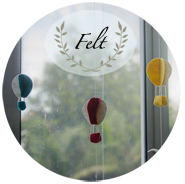K had his first Mad Science Party experience for his birthday this year. The last birthday party we had for K, with friends, was when he was four. Surrounded by excited 3-5 year olds running amok in the estate, having to break up fights along the way, and needing to calm an over-stimulated K who threw a tantrum halfway during the party, was not exactly my idea of a great time.
Not for me anyhow.
But I am sure the kids enjoyed the party, I suppose. After all time slaving over the computer to plan for party games, creating materials to print and laminate, sourcing for decent things to fill the goodie bags. What about the cake? I am now convinced that pretty fondant cakes look really fancy and pretty, but the taste? Bland and dry.
I told myself this year that K’s birthday will be really simple, just a cake and some goodie bags. So when Mad Science got in touch with me recently, I was thrilled to be able to have a party for K, all without any hassle on my end.
All I needed to get for the party was the cake.
 The red and blue thing on the chocolate banana cake is a $9.90 plastic spiderman topper. Not fondant, the kid doesn’t care for it. Who eats fondant anyway?
The red and blue thing on the chocolate banana cake is a $9.90 plastic spiderman topper. Not fondant, the kid doesn’t care for it. Who eats fondant anyway?
So, the key highlight of the party has to be the arrival of the Mad Scientist from Mad Science and her travelling laboratory of beakers filled with colorful liquids and intriguing gadgets.


Have you ever been in a room with 23 kids who are fascinated and engaged with the activities for a full 1 hour 15 minutes? Then read on to see what went on in K’s party that could have enthralled them from the start to finish.
K’s Air Blast Party from Mad Science included numerous interactive experiments, intriguing chemical reactions and hands-on activities :-
- The first experiment was with a boiled egg (Eggbert) and a glass beaker (his house); Eggbert the two inch Mad Science assistant can’t get into his house because he has overeaten! How did the Mad Scientist get Eggbert into his house? The science of air pressure is used to solve his predicament.

 Tadah!
Tadah!
- The second experiment was with styrofoam. Peggy’s apartment is a mess (of styrofoam), how can we help her to clean up? The kids learnt about chemical reactions when Mad Scientist dramatically shrink the mess to help Peggy clean up

 Oh look! The mess has shrunk!
Oh look! The mess has shrunk!
- Create puffs of vortices with vortex generators! The Birthday boy gets to blow a candle the Mad Science way, using a vortex generator

How about using a vortex generator for a cup on K’s head?

I think it will be more fun to get that cup off the Mad Scientist’s head!

- Can an ordinary washing machine tube sing? With the science of air pressure, it can!

- Can any one challenge the Mad Scientist to blow a big airbag with just one breath?

- Can you make 1 ping pong ball, then 2 float? These boys managed to do it.

- The kids learnt how to catch their own shadow

- As an an add on to the Mad Science Air Blast party, the Wonders of Dry-Ice give all of K’s classmates a chance to taste the Big Burp (sublimated carbon dioxide smoke), play with dry ice foam and get a Mad Science shower.


- And finally, the kids made their own goodie to take home, icky gooey slime and learnt the science behind making it

My review of the Mad Science Party?
Mad Science will be the highlight of any birthday party for kids between 4-12 years old. The story telling method used to teach science concepts was easy to understand, fun and engaging. K’s classmates at the party participated in at least 3 interactive activities, so they were not just spectators who watched the experiments.
And the result of the Mad Science Party?
There was clear excitement in the air after the party ended. I think the best time to have a Mad Science Party is in the late afternoon, when the kids have had their naps (which was what we did).
Do be prepared for a room full of thrilled and chatty kids who will be admiring their gooey slime and smiley teachers at the end of the session 
As for K’s verdict of his Mad Science Birthday Party?

“My party is AWESOME! Mummy I want have Mad Science again for my next birthday party!”
To top off a fantastic Party, Mad Scientist presented K with his own Mad Science Goodie Bag.

What was in there?
There were 7 toys in the Mad Science goodie bag that will stick, spin and fly
– Helix Flyer
– Spin Disc (mini frisbee with its wrist launcher)
– Flip Top (watch this spin)
– Polymer Putter (splatter it and let it get back to it’s original shape)
– Soak and Grow (this grows 6x after soaking in water overnight)
– Mad Science Large Sticker Sheet
– Mad Science Tattoos compilation

Sounds good? This very same Mad Science Goodie Bag worth $12 each is up for grabs, 50 sets to giveaway for readers at catch-fortywinks.com. All you need to do is to pop over to Mad Science Facebook page @ https://www.facebook.com/madsciencesingapore and LIKE their page. The people at Mad Science will send you a private message through Facebook, if you are one of the winners of the goodie bag. Giveaway to close by 22 April 2013.
K had tremendous fun with the toys in the Mad Science Goodie Bag, I am sure your kids will too. So do pop over to the Mad Science Page now to participate in this giveaway!
For more information about having a Mad Science Birthday Party, visit their website on their party Information and FAQa.
Disclosure – K’s Mad Science Party was sponsored by Mad Science Singapore, but all opinions in this post are my own.




 This one has a color key
This one has a color key While for this, he spent 1 hour drawing and coloring in the patterns and told me that he want to continue this artwork in a separate session.
While for this, he spent 1 hour drawing and coloring in the patterns and told me that he want to continue this artwork in a separate session. Squares with Concentric Circles by Wassily Kandinsky, 1913
Squares with Concentric Circles by Wassily Kandinsky, 1913






















